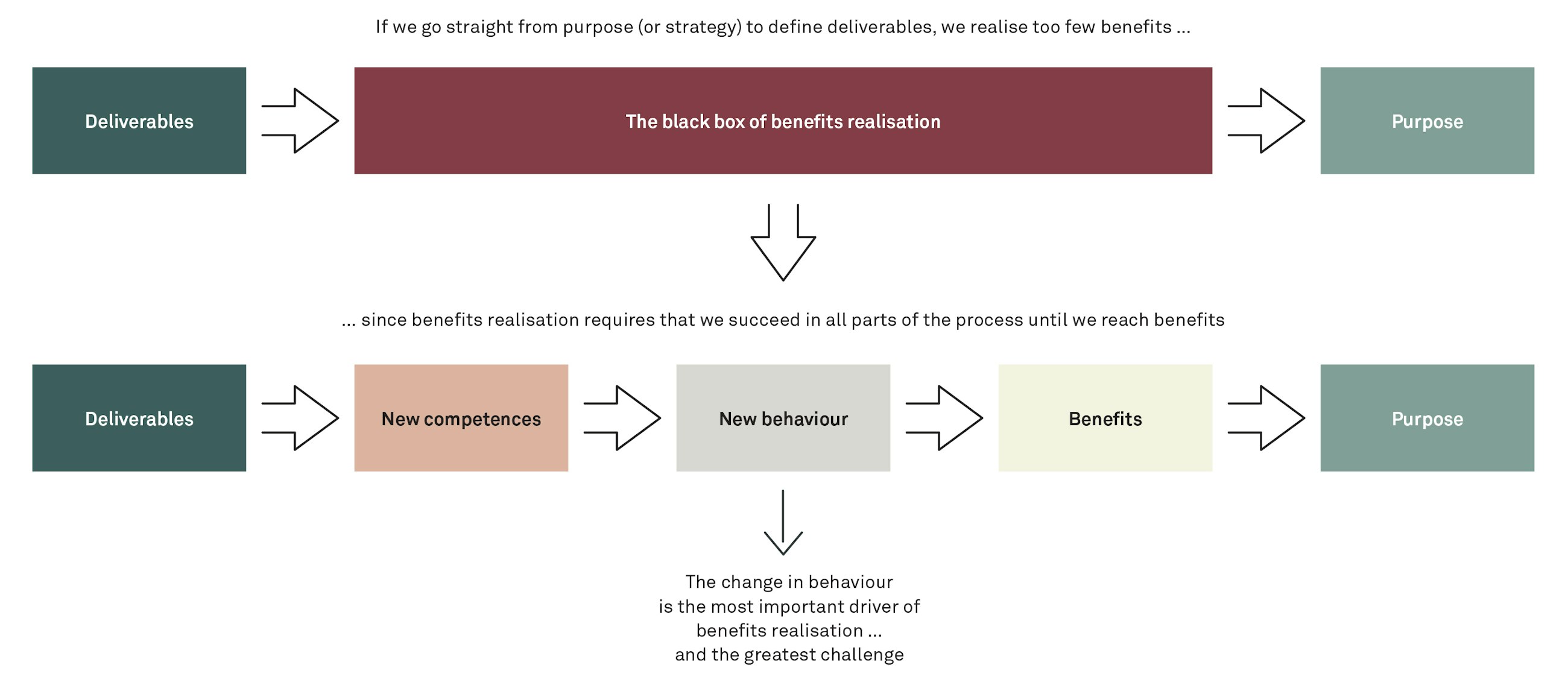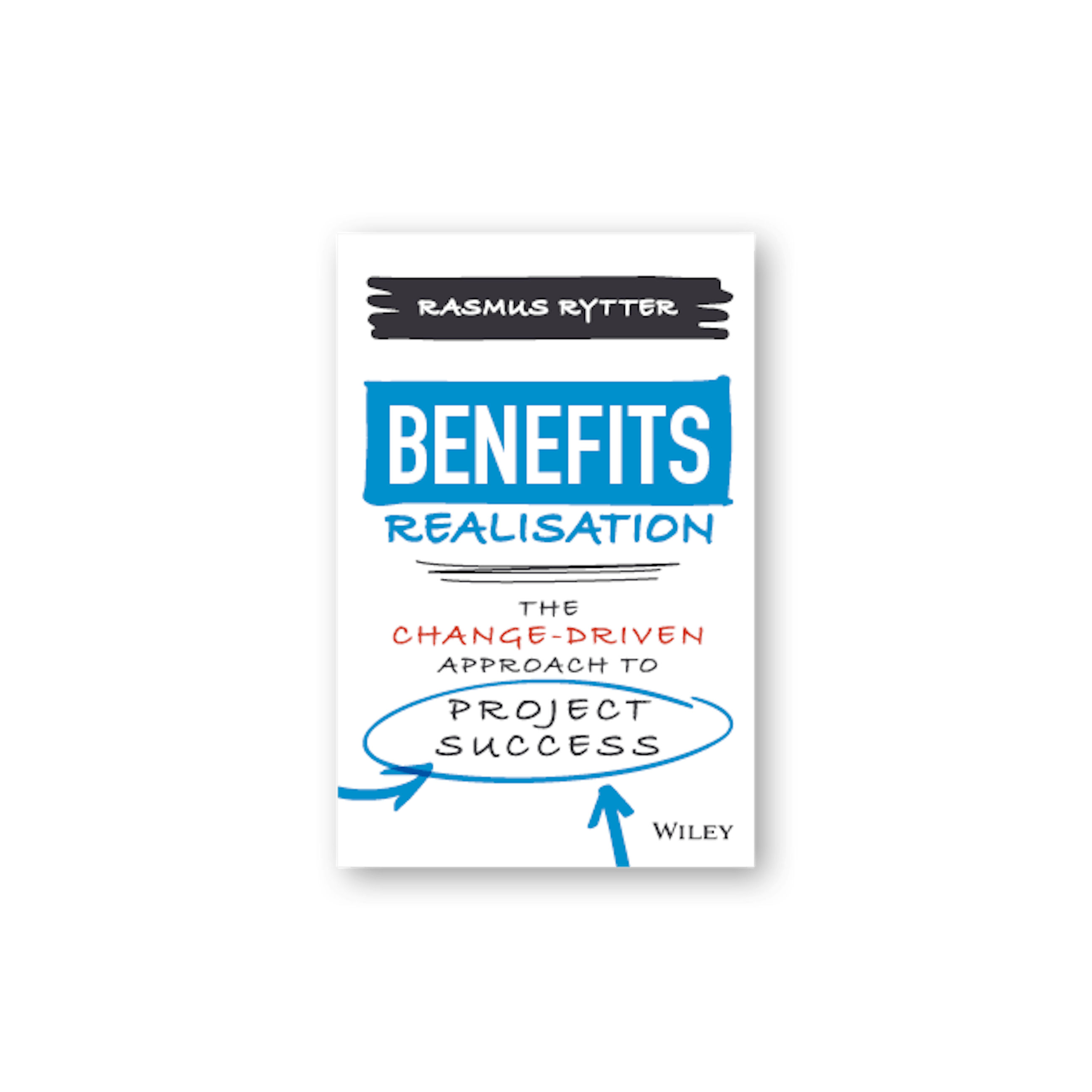The key tool for benefits realisation
2 May 2019
It can do almost anything – the benefit map. And it is not just a tool. If used correctly, it provides a common understanding of how our projects create value.
The benefit map creates ownership of the realisation of benefits, and it moves the focus away from deliverables and towards behaviour as the driver of benefits realisation. Learn more about the tool and watch the video to get inspired by concrete advice from Carsten Kruse, Director at Nykredit, and their work with benefits realisation.
Benefits realisation in change projects takes place in the benefits realisation process
Traditionally, we have had a tendency to only focus on the first and the final steps of our projects – the project’s purpose and the production of deliverables – which leaves a “black box” in the middle. The project’s benefits realisation was a “black box”. We defined a wide range of deliverables based on the purpose of the project, we produced them – and hoped for the best.
Sometimes, the results were great, but that is far from always the case. In fact, it is still only every third project that succeeds in realising benefits that are similar to the benefit potential.
The figure below illustrates the benefits realisation process and thus the cause-effect relationship which we need to establish in order to succeed with benefits realisation.
To ensure the realisation of benefits of the project, we roll out the benefits realisation process on the project, thus creating the benefit map. At a 3-hour workshop, the project manager and the steering committee create the benefit map and thus design the project together as soon as the project’s analysis phase is kicked off.
At the workshop, we start with the purpose and work our way from the right side to the left side of the diagram. The purpose should preferably be determined beforehand in order to be able to work within an overall framework. Subsequently, the project benefits are determined, which has proven to be the most difficult part of the workshop.
After having conducted more than 200 benefits realisation workshops since my, Jesper Lind, and Per Svejvig’s book on benefits realisation was published in October 2015, we have gained experience with just that. It turns out that if we break down the project benefits into “final benefits” and “performance benefits”, it creates a more clear cause-effect relationship and helps us to become even better at how to change the behaviour of the various groups of employees in order to realise the benefits.
Once the change in behaviour has been defined, we determine the deliverables required for creating the necessary change, building the competences needed and producing the products, processes, value propositions or IT support needed to ensure the desired behaviour.
Below is a benefit diagram from a project at Nykredit in a simplified and anonymised form.
The benefit diagram – the road to overview and ownership
In the Nykredit example, the change of behaviour of a small group of advisers is the foundation for the whole business case. The goal of achieving 270 new customers per year (see the figure above) was very ambitious compared to the time available for consultancy at the time. Thus, the use of the time available for consultancy and the behaviour towards the customers are revisited once more to make sure that behaviour and performance were connected by a strong cause-effect relationship and to make sure that benefits realisation would reach a level that made the business case desirable.
The most important parts of the value creation were discussed early because the steering committee invested three hours in producing the benefit map. The value creation became clear and realistic. Ownership of the benefits was established, and the scope of the project was adjusted to create the foundation for the value creation – and nothing else.
The benefit map
- Provides an overview of the project’s benefits – and how to create them
- Creates ownership of the project and the benefits among the benefit owner and project owner
- Clarifies the scope so that we only produce value-creating deliverables
- Is an effective communication tool that demonstrates why we do the project
- Indicates the size of the change
Yes, sometimes, we are on cloud nine after a workshop like this one. However, that is not the only reason why the benefits are realised. It requires that we complete the benefit map and use it as a point of departure for the analyses and the development of the good business case.







